
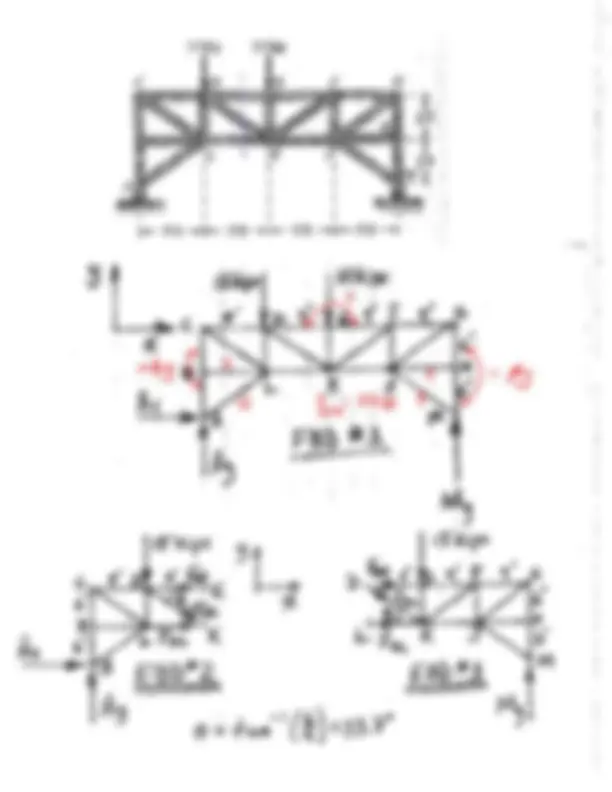
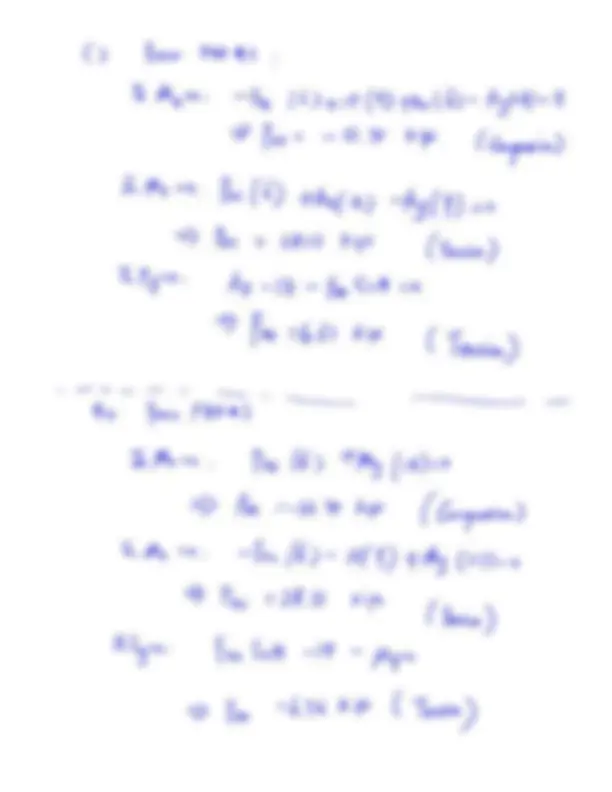
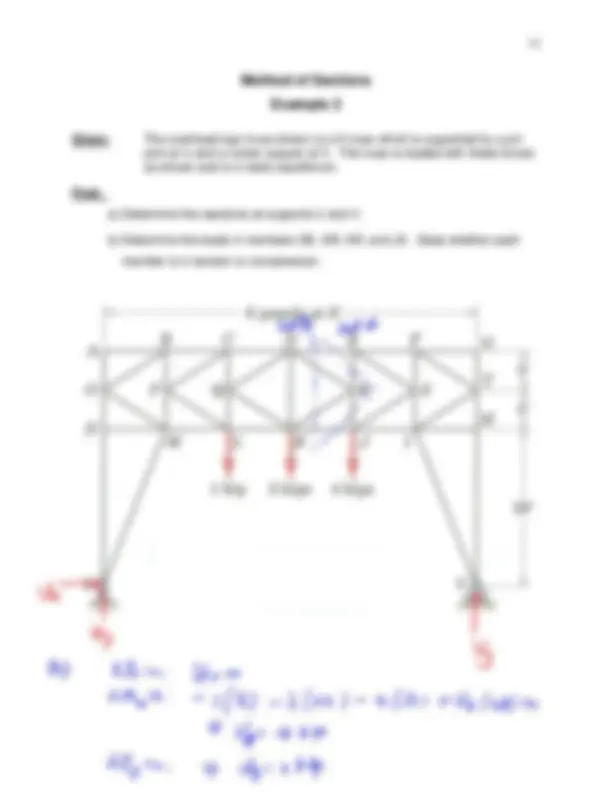
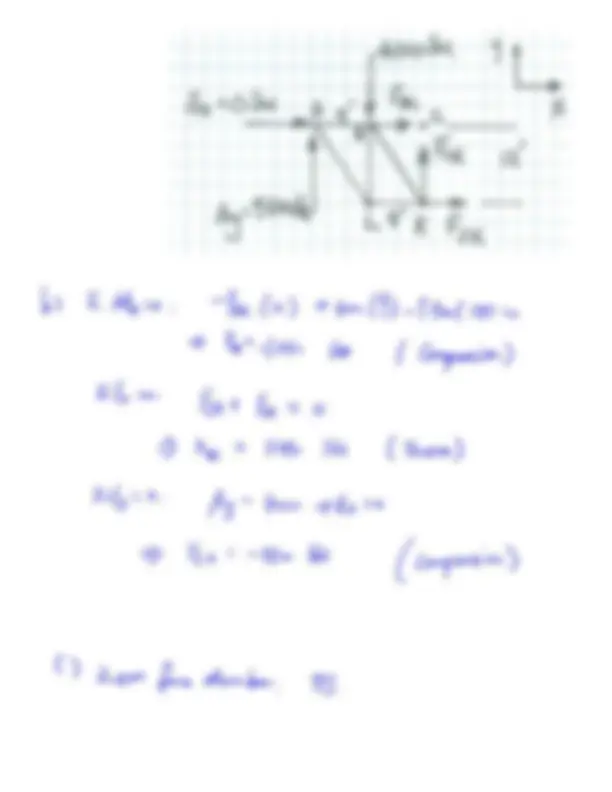
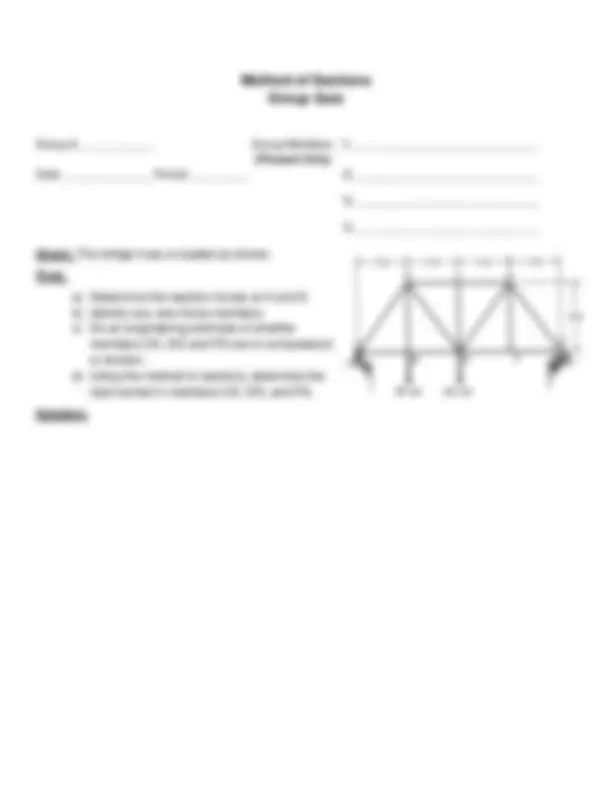
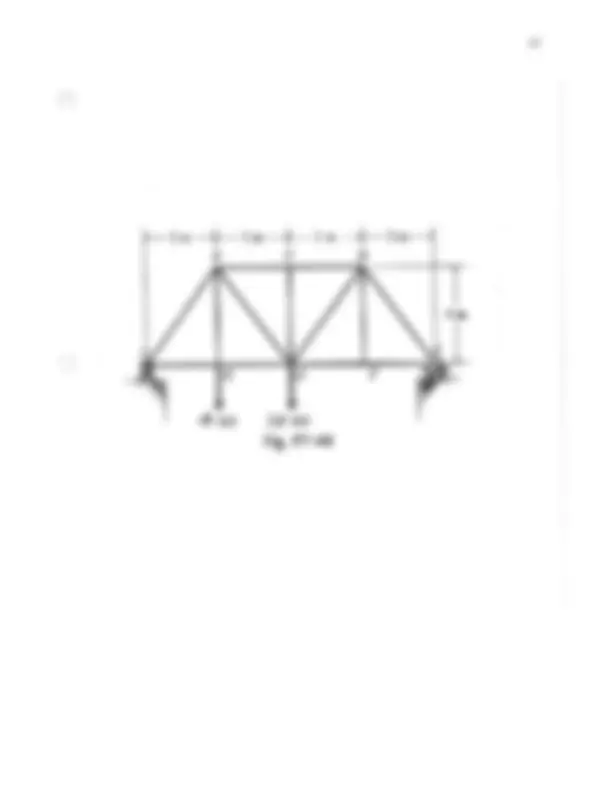
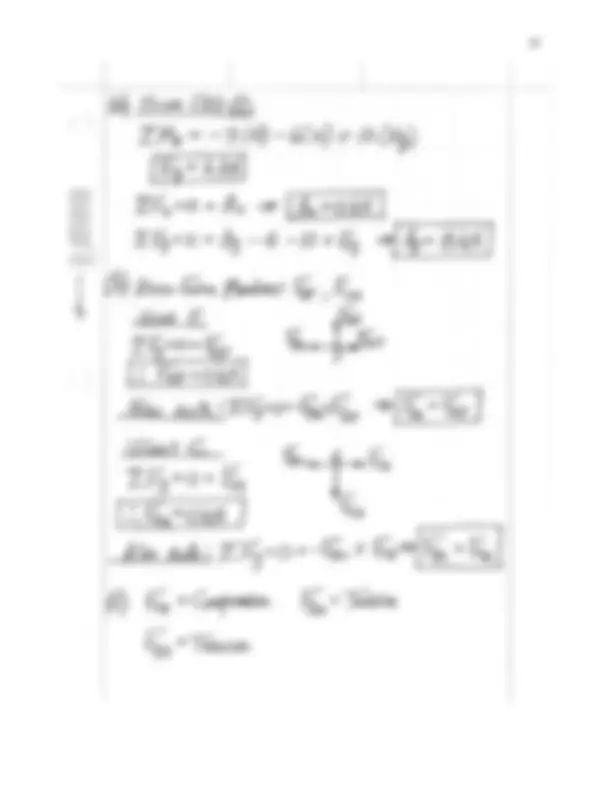


Study with the several resources on Docsity

Earn points by helping other students or get them with a premium plan


Prepare for your exams
Study with the several resources on Docsity

Earn points to download
Earn points by helping other students or get them with a premium plan
Community
Ask the community for help and clear up your study doubts
Discover the best universities in your country according to Docsity users
Free resources
Download our free guides on studying techniques, anxiety management strategies, and thesis advice from Docsity tutors
METHOD OF SECTIONS. Learning Objectives. 1). To employ the method of sections to evaluate the axial force carried by selected members in a truss.
Typology: Lecture notes
1 / 13

This page cannot be seen from the preview
Don't miss anything!








Given: Truss A-M is supported by a pin support at joint A and a roller support at joint M. The truss is loaded with two 15kip forces as shown. (Note: 1kip = 1,000lbs.)
Find:
a) Determine the reaction forces at supports A and M.
b) By inspection, identify all zero-force members in the truss. What else can you determine about the truss by inspection?
c) Using the method of sections, determine the loads in members DE, KL, and DK. State whether each of these members are in tension or compression.
Given: The overhead sign truss shown is a K-truss which is supported by a pin joint at U and a rocker support at V. The truss is loaded with these forces as shown and is in static equilibrium.
Find:
a) Determine the reactions at supports U and V.
b) Determine the loads in members DE, DR, KR, and JK. State whether each member is in tension or compression.